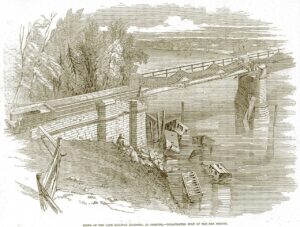 Forensic engineering applies the field of engineering to cases of the law when necessary. Generally, this means that a forensic engineer is called to a scene where a car, bridge, or piece of machinery has malfunctioned in order to collect evidence, investigate the cause, and testify in court if needed.
Forensic engineering applies the field of engineering to cases of the law when necessary. Generally, this means that a forensic engineer is called to a scene where a car, bridge, or piece of machinery has malfunctioned in order to collect evidence, investigate the cause, and testify in court if needed.
The role of a forensic engineer is broken up into two parts. There is the detective role and then the engineering role. The detective role is when the forensic engineer, with the help of law enforcement, looks for clues about what happened and looks for evidence to achieve certainty about what exactly occurred. In the case of a car crash, the vehicle or the vehicles are the most important evidence. This is because the vehicles involved can help determine the angle of impact, the speeds involved, and whether or not seat belts were used.
The engineering role is when the real investigative part of a forensic engineer’s job. Through crash tests — tests involving cars specially designed to hit concrete barriers at various speeds — engineers can determine how fast the car was going at the time of the crash. During these crash tests, it is important for the car model to be the same since the amount of damage to a car is determined by specific properties such as stiffness. As well as investigating the vehicle’s movements in a crash (referred to as vehicular kinematics), it is also important for the forensic engineer to study the movements of the passengers (occupant kinematics) before, during, and after the crash. It is important to study the occupant movement to help determine the cause of injury, because the peak acceleration of the head and neck can be greater than the peak acceleration of the vehicle involved. The evidence that has been found by the forensic engineer can then be used in court. Common examples of cases where this kind of evidence could be used are personal injury or product liability cases.
To become a forensic engineer, one must earn a bachelor’s degree in engineering. This is typically a four year program. Finding a school with classes pertaining to forensic engineering can be difficult, so extensive research is required while applying to colleges. Once a bachelor’s degree in engineering is earned, one must become a licensed engineer in his or her state. In order to become a licensed engineer, one must take the Principles and Practice of Engineering examination. Generally, a new graduate has to garner a good amount of training and experience before being ready to take the exam. Once a new graduate is licensed, they can progress towards becoming a forensic engineer. This is a one year process and requires the applicant to demonstrate experience in forensic engineering, demonstrate proficiency in technical knowledge and ethics, and pass an oral and written exam. Once one becomes a forensic engineer, one can work in several different places. A forensic engineer can be hired by a government agency, such as a police force, or by a car company that manufactures or makes cars. Some forensic engineers teach on the side, serving as forensic engineer consultants.
Back to Crime Library
|
|
|
